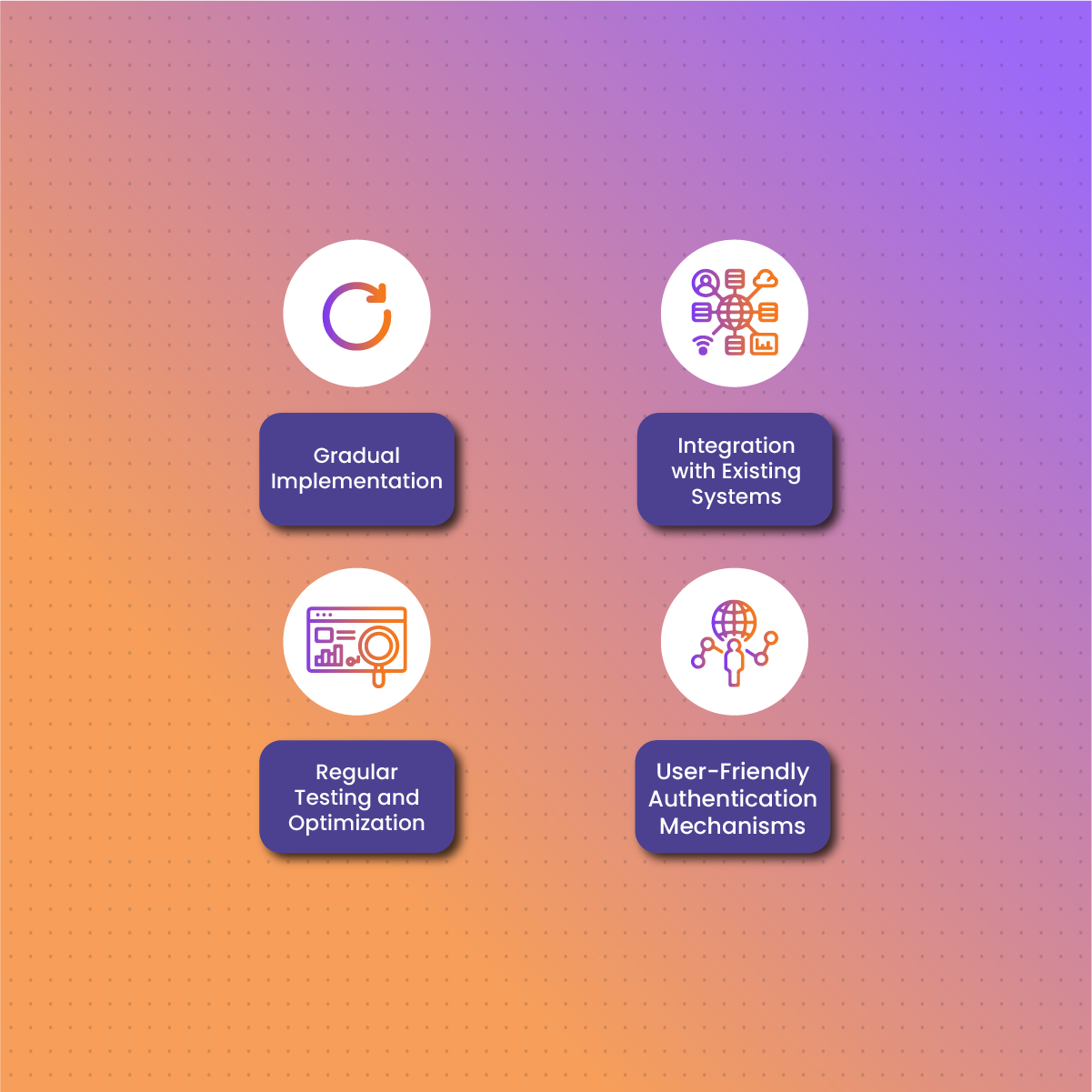Introduction
Due to increasing online innovations, businesses and individuals face constant threats from malicious bots. These automated programs are designed to perform repetitive tasks at an unprecedented scale. These actions cause them to wreak havoc on websites, applications, and online services.
As a result, businesses and individuals find themselves in a constant battle to defend against these bots. To counter this menace, the need for a reliable anti bot solution is more critical than ever. Traditional bot security measures, while still essential, often fall short in identifying and mitigating the complex tactics employed by modern bots.
The consequences of a successful bot attack are profound, ranging from unauthorized access and data breaches to financial fraud and service disruptions. Fortunately, enterprises recognize the importance of deploying advanced anti bot solutions to fortify their digital defenses.
In this article, we explore the cutting-edge modern anti bot solution. We will talk extensively about the types of anti bot solutions security proxies, and explore their features.
Let’s dive in!
Understanding Bots and Need For Anti Bot Solution 
The multifaceted nature of bot attacks has become an omnipresent challenge online and begs the need for anti bot solutions. As these automated bot scripts evolve in sophistication and adaptability, understanding their various dimensions is crucial for developing effective strategies to mitigate their impact and develop an effective anti bot solution.
The Nature of Bot Attacks
Bot attacks are not one-size-fits-all; rather, they manifest in various forms, each designed to exploit specific vulnerabilities and achieve distinct objectives. Understanding the complex nature of these attacks requires a careful examination of their activities:
- Web Scraping: Bots engaged in web scraping extract vast amounts of data from websites, potentially leading to intellectual property theft, loss of competitive advantage, or content piracy.
- Credential Stuffing: In credential stuffing attacks, bots systematically test stolen usernames and passwords on various websites, exploiting the tendency of individuals to reuse login credentials across multiple platforms.
- DDoS Attacks: Distributed Denial of Service (DDoS) attacks orchestrated by bots overwhelm online services with a flood of traffic, rendering them inaccessible and disrupting normal operations.
- Account Takeovers: Bots can compromise user accounts by exploiting weak passwords or leveraging stolen credentials. This can lead to unauthorized access, financial fraud, or the dissemination of malicious content.
- Click Fraud: Bots engaging in click fraud mimic human clicks on online advertisements. This leads to inflated advertising costs for businesses and misleading performance metrics.
With the understanding of these bot actions, organizations can develop targeted anti bot solutions that can effectively identify and counteract these threats.
Types of Anti Bot Solutions
As the threat of malicious bots continues to evolve, so must the strategies employed to combat them. Here, we will explore the varieties of anti bot solutions, from traditional approaches to cutting-edge technologies, offering a comprehensive understanding of the tools available in the ongoing battle against automated bot threats.
Traditional Anti Bot Solution
- CAPTCHAs: CAPTCHAs have been a longstanding anti bot solution for distinguishing between humans and bots. However, they have drawbacks such as user inconvenience, susceptibility to advanced bot algorithms, and accessibility issues for certain users.
- IP Blocking: Blocking specific IP addresses associated with malicious activities is a conventional anti bot solution tactic. However, it is an inherently reactive approach and can result in false positives, impacting legitimate users who share the same IP.
- Limiting IP Rates: A rate-limiting anti bot solution involves restricting the number of requests from a particular IP within a specified timeframe. While effective to some extent, it can hinder the experience for legitimate users and is susceptible to sophisticated bot evasion techniques.
- Signature-Based Detection: This anti bot solution involves identifying known patterns or signatures associated with bots. However, it fails to detect new or evolving bot tactics, making it less effective in dynamic environments.
Modern Anti Bot Solutions
Modern anti bot solutions leverage behavioral analysis to scrutinize user interactions and identify anomalies indicative of bot activity. By understanding patterns of legitimate user behavior, these solutions can effectively differentiate between humans and bots. These modern anti bot solution include:
- Machine Learning and AI: By using the power of machine learning and artificial intelligence, advanced anti bot solutions can adapt to new and evolving tactics. They continuously learn from data patterns, allowing for proactive threat detection without needing pre-defined signatures.
- Device Fingerprinting: This anti bot solution technology creates unique browser fingerprints for each device accessing a platform, considering attributes such as browser type, screen resolution, and operating system. It enables the identification of bots attempting to mimic diverse user profiles.
- Challenge-Response Mechanisms: Beyond traditional CAPTCHAs, modern challenge-response mechanisms dynamically adapt based on user behavior. This anti bot solution presents challenges that are less predictable for bots, making it harder for them to pass.
By implementing the modern anti bot solution highlighted above, users can enjoy a more adaptive and robust defense against bot threats.
Best Practices for Implementing Anti Bot Solution
Implementing an effective anti bot solution requires a strategic and comprehensive approach. Highlighted below are best practices for organizations to assess their specific anti bot solution needs. These practices offer tips for seamless integration and optimization of anti bot solution measures.
Steps for Organizations to Assess Their Specific Anti bot solution Needs
- Comprehensive Risk Assessment: Conduct a comprehensive risk assessment to identify potential vulnerabilities to bot attacks. This includes evaluating the types of online assets at risk, understanding the value of sensitive data, and recognizing the potential impact of bot-driven threats.
- Understanding Industry-Specific Threats: To maximize the perfect anti bot solution for your business, understand that different industries face unique bot-driven threats. Tailor anti bot solution measures to address industry-specific challenges, considering the tactics commonly employed by bots in the relevant sector.
- Mapping Attack Surfaces: Map out the various attack surfaces within the organization, including websites, APIs, mobile applications, and network infrastructure. Understanding the potential entry points for bots enables targeted protective measures.
Tips for Seamless Integration and Optimization of Anti Bot Solution
For effective integration and optimization of modern anti bot solution, follow these processes:
- Gradual Implementation: Implement anti bot solution gradually to minimize disruption to normal operations. This allows organizations to monitor the impact on user experience and adjust strategies based on real-world data.
- Integration with Existing Systems: Ensure seamless integration with existing security systems. Effective anti bot solutions should complement and enhance the overall cybersecurity infrastructure without causing conflicts or compatibility issues.
- Regular Testing and Optimization: Regularly test and optimize anti bot measures. Conducting simulated bot attacks helps organizations identify potential weaknesses, allowing for continuous improvement and adaptation to evolving threats.
- User-Friendly Authentication Mechanisms: Implement user-friendly authentication mechanisms. While it’s crucial to secure systems against bots, organizations should prioritize user experience by adopting authentication methods that are both secure and convenient.
By following these best practices, organizations can craft their anti bot solution and fortify their defenses.
Integration of NetNut Proxy Service as an Effective Anti Bot Solution
NetNut is a premium proxy service that goes beyond traditional proxy solutions. It leverages a vast pool of residential IPs, ensuring a diverse and expansive network. This diversity helps NetNut users remain anonymous while offering unparalleled reliability and speed. This, coupled with its anti bot solution capabilities, positions NetNut as an ideal solution for businesses looking to secure their online assets.
Steps for Integrating NetNut into Existing Anti bot solution
For easy integration, follow these steps:
- Assessment of Current Anti Bot Solution: Before integration, conduct a thorough assessment of your existing anti bot solution setup to identify potential vulnerabilities that NetNut can address.
- API Integration: Develop a comprehensive integration plan outlining how NetNut will complement existing anti bot solutions without causing disruptions. Then, leverage NetNut’s API documentation to seamlessly integrate its services into your existing anti bot solution, ensuring a smooth transition.
- Testing Phase: Implement NetNut in a controlled environment to evaluate its impact on network performance and identify any compatibility issues.
- Monitoring and Analytics Integration: Integrate NetNut’s monitoring and analytics tools into your existing anti bot solution dashboard to gain insights into bot threats and network performance.
Tips for Optimizing NetNut’s Performance for Specific Use Cases
Furthermore, users can implement NetNut proxy service with customized anti bot solution activity. This can be done by:
- Customize IP Rotation Settings: Adjust NetNut’s automatic IP rotation settings based on the specific needs of your use case to minimize the risk of detection.
- Utilize Location-Specific IPs: Opt for NetNut’s location-specific IPs or static residential IPs to enhance geotargeting capabilities, ensuring compliance with regional restrictions.
- Fine-Tune Connection Speed: Adjust the connection speed settings to align with the demands of your application or service, optimizing both speed and reliability.
On a final note, the integration tips and performance optimization strategies demonstrate NetNut’s dedication to providing effective and future-proof anti-bot solutions.
Conclusion
In conclusion, the threat posed by malicious bots requires proactive measures. Fortunately, with the anti-bot solution outlined above, internet users can enhance their online security. With innovative features, a diverse IP pool, and an emphasis on user privacy, users enjoy protection against bots.
The role of anti-bot solutions in cybersecurity is more vital than ever. As bots evolve, organizations and individuals must prioritize and invest in effective measures to secure digital environments. In an attempt to keep up with bots, internet users must be updated with advanced technologies.
To a great length, internet users can now enjoy a digital environment that is secure, resilient, and equipped with modern anti-bot solutions. Resolve bot threats by exploring modern anti bot solutions now!
Frequently Asked Questions
What is a bot?
A bot is a computer program designed to automate certain tasks. Bots are often used to automate repetitive tasks to attain a high level of accuracy. Subsequently, this may eliminate inconsistencies arising from human errors. In addition, the use case of a bot determines if its nature is good or malicious.
In what industries can NetNut be used as an anti bot solution?
NetNut is versatile and can be employed across various industries as an anti bot solution. It is particularly effective in e-commerce, online gaming, social media, and any sector dealing with sensitive data that requires robust bot protection.
What is bot management?
Bot management is the process of using software to identify and classify bots based on their behavior. Since blocking all bot traffic is not a sustainable approach, bot management becomes a priority. Bot management may involve the use of machine learning to study the pattern of activities from a device.









